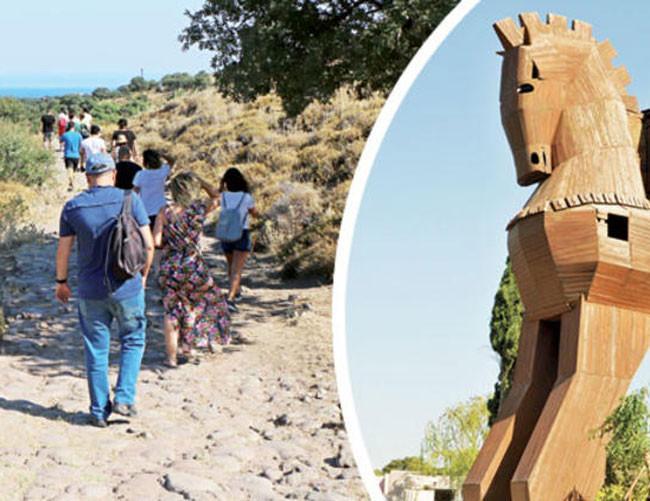
A 120-kilometer touristic footpath has been set between the Troy Museum in Turkey’s northwestern province of Çanakkale and the ancient port city of Assos in the south.
The Troy Culture Route, based on the epic poem The Aeneid written by Virgil between 29 and 19 B.C., was designed as part of the Year of Troy celebrations, declared by the Culture and Tourism Ministry to mark the 20th anniversary of Troy being added to UNESCO’s World Heritage List.
“We have set a route suitable for hikers. We have considered the places to be historical and eye-pleasing. Hikers will walk on the soil through olive trees and gardens, contributing to local businesses. By this means, we will extend the tourism season to the whole year,” said Mustafa Boz, an associate professor from Çanakkale University who helped determine the trails.
The route, projected with support from the Çanakkale History and Culture Foundation (ÇATKAV), the ministry and the United Nations Development Programme (UNDP), passes through some ancient ruins, mounds, and 25 modern-day villages.
The villagers will receive training for tourism, running a guesthouse, and protecting the historical and natural environment.
“Our history goes back to the years of the 1600s. Although there are several ancient sites in the vicinity, the means of livelihood in the village has depended on breeding. Henceforth, tourism will also contribute to our economy. We are the most hospitable villagers in this area. We like to meet with people. We will have a cultural exchange with the visitors,” said Mustafa Gülen, chief of the Korubaşı village, which is home to 450 people.
Some villagers even expect a remigration to their villages.
“Our population has decreased to 100. Our farm lands are scarce. Young people do not want to stay in the village … Thus, we want some people to pass through the village and maybe some of them would settle down here. There are many empty houses, which have turned to hovels. We do not have any availability to provide service now but some of our children will come back when they believe they can earn their bread here,” said Şaban Türker, Kalafat village chief.
“Until now, we have not had any benefit from Troy. We have collected the garbage without any return. That is why we used to say, ‘Let this rubble burn down.’ But after reading the Iliad, things have changed. It is no more a rubble for us after we understand the importance and value of history,” he added.
Troy was immortalized by the ancient Greek poet Homer in his epic the Iliad, telling the story of the last year of the decade-long Trojan War.
Troy, located just south of the Dardanelles Strait on the mounds of Hisarlık overlooking the Turkish Aegean coastal plain, has been one of the most famous archeological sites in the world, with its 4,000-year history.
